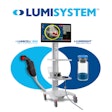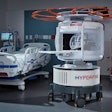
Will the requirement to use clinical decision support (CDS) finally become a reality? The current timetable for the penalty phase of the appropriate use criteria (AUC)/CDS rule calls for it to begin on the later of January 1, 2023, or the first of January following the end of the COVID-19 public health emergency.
 Sandy Coffta.
Sandy Coffta.The public health emergency has just been extended another 90 days into July 2022, with no end in sight -- although there are some indications that it could end this year. One source reports that the Biden administration will give 60 days' notice before ending the public health emergency. With this uncertainty, it would be wise for practices to be ready just in case.
Under the AUC/CDS Medicare mandate, ordering physicians are required to consult appropriate use criteria via an approved qualified clinical decision-support mechanism (CDSM) before ordering CT, MRI, nuclear medicine, and PET exams for outpatients covered by Medicare Part B. If the consultation is not done, or if the proper result codes are not reported to Medicare by the radiologist, then payment to the radiologist will be denied.
The program was opened in 2020 and continues to be in an "educational and operations testing" phase. Once the penalty phase begins, rendering providers will not receive Medicare technical or professional component payment for the procedure without submitting a properly documented AUC consult.
The Medicare Physician Fee Schedule Final Rule for 2022 contained some new information about the AUC/CDS program:
- When Medicare is the secondary payer, the claim will be exempt from penalty.
- When an order needs to be modified at the time of service and the ordering physician cannot be reached to submit a new order, the AUC consultation information from the original order is to be included in the claim.
- Services that are ordered prior to the beginning of the program but performed after the program begins will be exempt from penalty. A new modifier to be defined later will be used to designate such circumstances.
- Claims for the professional component for services provided in a facility where the institution is exempt from the AUC/CDS program will not be subject to penalty. The same new modifier will be used to designate such circumstances.
- Claims for the professional component with the following Place of Service codes will be subject to AUC/CDS claims processing edits:
- 11 (office)
- 15 (mobile unit)
- 19 (off-campus hospital outpatient)
- 22 (on-campus hospital outpatient)
- 23 (emergency room)
- 24 (ambulatory surgery center)
- Modifier QQ that was available during the current testing phase will be eliminated once the penalty phase begins. Modifier MH will also be eliminated and replaced by a new modifier yet to be defined to describe circumstances where the ordering physician was not required to consult AUC.
The remaining applicable modifiers will be as indicated in the table below:
| Applicable modifiers | ||
| Situation | Modifier | G-code |
| A consultation was required and was performed: | ||
| The order adheres to the criteria | ME | Required |
| The order does not adhere to the criteria | MF | Required |
| The order does not have any criteria in the CDSM | MG | Required |
| A consultation was not required, due to: | ||
| An emergency medical condition | MA | Not required |
| Insufficient internet access | MB | Not required |
| Electronic health record or CDSM vendor issues | MC | Not required |
| Extreme or uncontrollable circumstances | MD | Not required |
Radiologists are not considered to be authorized ordering physicians for the purpose of the AUC/CDS mandate. Medicare requires that the treating physician, not the imaging provider, must consult a qualified clinical decision support mechanism but there could be situations where the interventional radiologist is both the ordering and furnishing physician.
According to information gathered by the Society of Interventional Radiology (SIR), the determining factor will be the role of the physician. When providing a therapeutic procedure, the interventional radiologist will be considered the treating physician and therefore may order a diagnostic procedure even if he or she is performing the diagnostic procedure.
The SIR recommends that to the extent that interventional radiologists also order diagnostic services, then it would be appropriate to notify them of their responsibility to consult a CDSM. They also note that many therapeutic procedures performed by interventional radiologists do not fall within the definition of the "advanced diagnostic imaging services" described above.
Tom Greeson of ReedSmith reports that a "coalition of more than 30 medical societies is urging Congress to repeal the AUC program for advanced diagnostic imaging." However, the American College of Radiology (ACR) has been supportive of Medicare's mandate. Greeson explains that the "genesis of ACR's support for AUC was grounded in the need to find an alternative to CMS requiring preauthorization for all advanced imaging."
ACR's website provides tools and other resources that will help your practice get ready, and the ACR Appropriateness Criteria is one source that may be used for appropriateness criteria in a clinical decision support mechanism; it was recently updated with five new and 15 revised topics.
Whether the penalty phase of the AUC/CDS mandate becomes effective in 2023 or later, practices that have not yet implemented the program should get started now. Selecting a system for your practice, educating ordering physicians about the need to use a clinical decision-support mechanism, and training them to use it will take time and effort.
Sandy Coffta is the vice president of client services at Healthcare Administrative Partners.
The comments and observations expressed are those of the author and do not necessarily reflect the opinions of AuntMinnie.com.



















